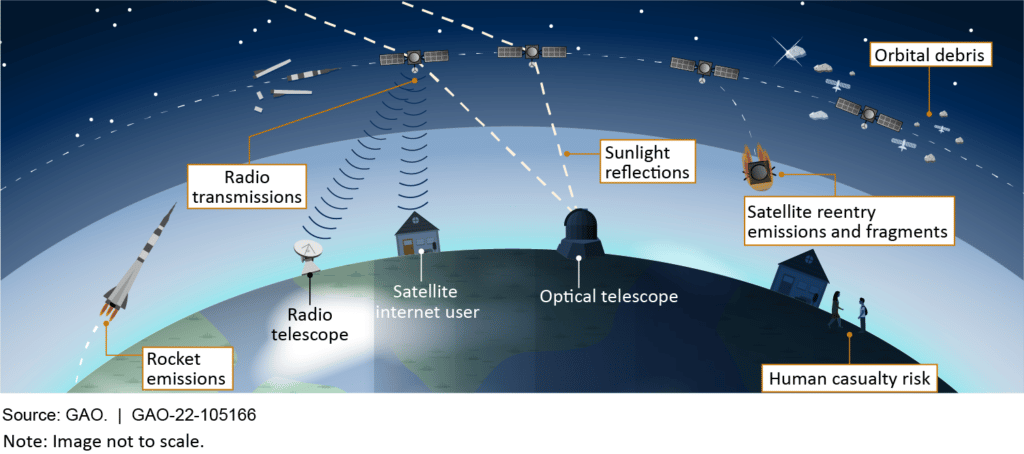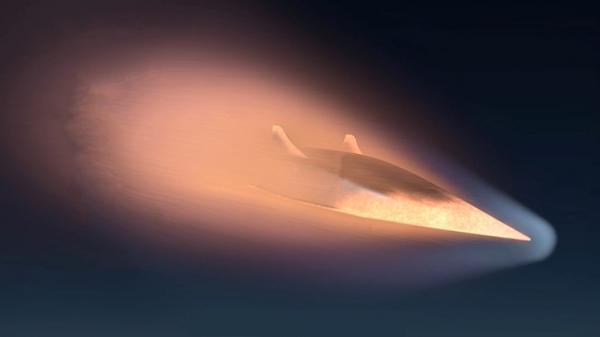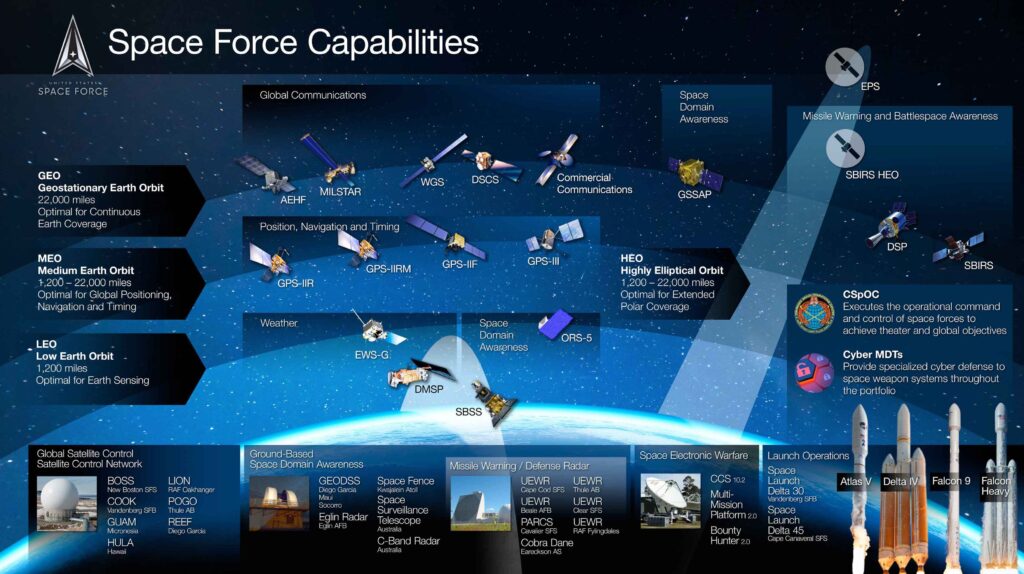
The list below is not a complete list of Defense space programs, just the most noteworthy, unclassified ones. Program descriptions are also simplified.
Communications
DOD uses different types of satellite communications (SATCOM) to support air, land, sea, and space operations critical to national security. On one end, are protected communications satellites suited to provide secure, assured, communications, such as during a nuclear war. They guard against a full spectrum of threats and can overcome jammers but require specialized materials, technologies, and terminals to do so. On the other end, are wideband communications satellites that support a broader range of communications, such as for high quality voice and imagery. These are more similar to what we see in the commercial sector. DOD also buys bandwidth from the commercial sector to supplement its own satellites.
- Advanced Extremely High Frequency (AEHF) satellites. Nuclear survivable, jam resistant satellites. The sixth (and last) AEHF satellite was launched in March 2020.
- Milstar satellites. Older nuclear survivable communications satellites.
- Evolved Strategic SATCOM (ESS). Satellites in development that will eventually replace AEHF.
- Family of Advanced Beyond Line-of-Sight Terminals (FAB–T). AEHF terminals that form a secure, airborne communications network to enable the president to communicate with senior military leaders.
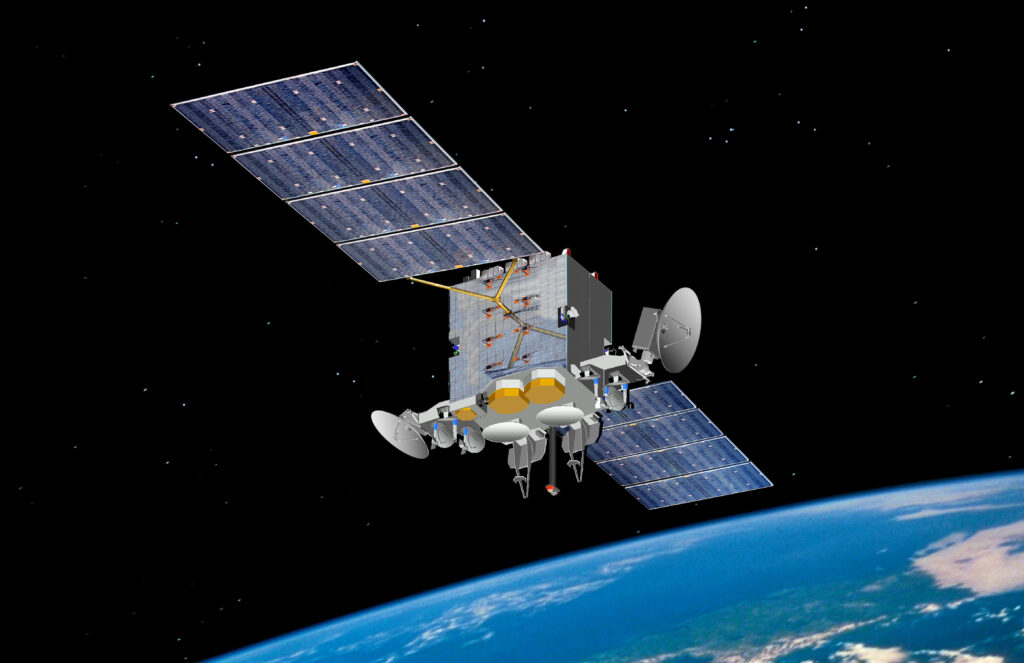
- Enhanced Polar System (EPS). Satellite systems to provide protected, extremely high frequency communications in the polar region.
- Enhanced Polar System Recapitalization (EPS-R). Payloads to fly on Space Norway satellites to extend the EPS lifespan.
- Protected Tactical SATCOM (PTS). Satellite payloads that will transmit a protected, antijamming waveform to users in contested environments.
- Protected Tactical Enterprise Services (PTES). Ground system in development to enable PTS.
- Wideband Global SATCOM (WGS). Satellites that provide flexible, high-capacity communications services to U.S. warfighters, allies, and other special users. Ten satellites have been launched; one more is in development.
- Mobile User Objective System (MUOS). Satellite system to provide worldwide narrowband satellite communications. Narrowband is better suited for penetration into buildings, tough terrain, and dense foliage as well as adverse weather conditions. MUOS was developed by the Navy. Five satellites have been launched.
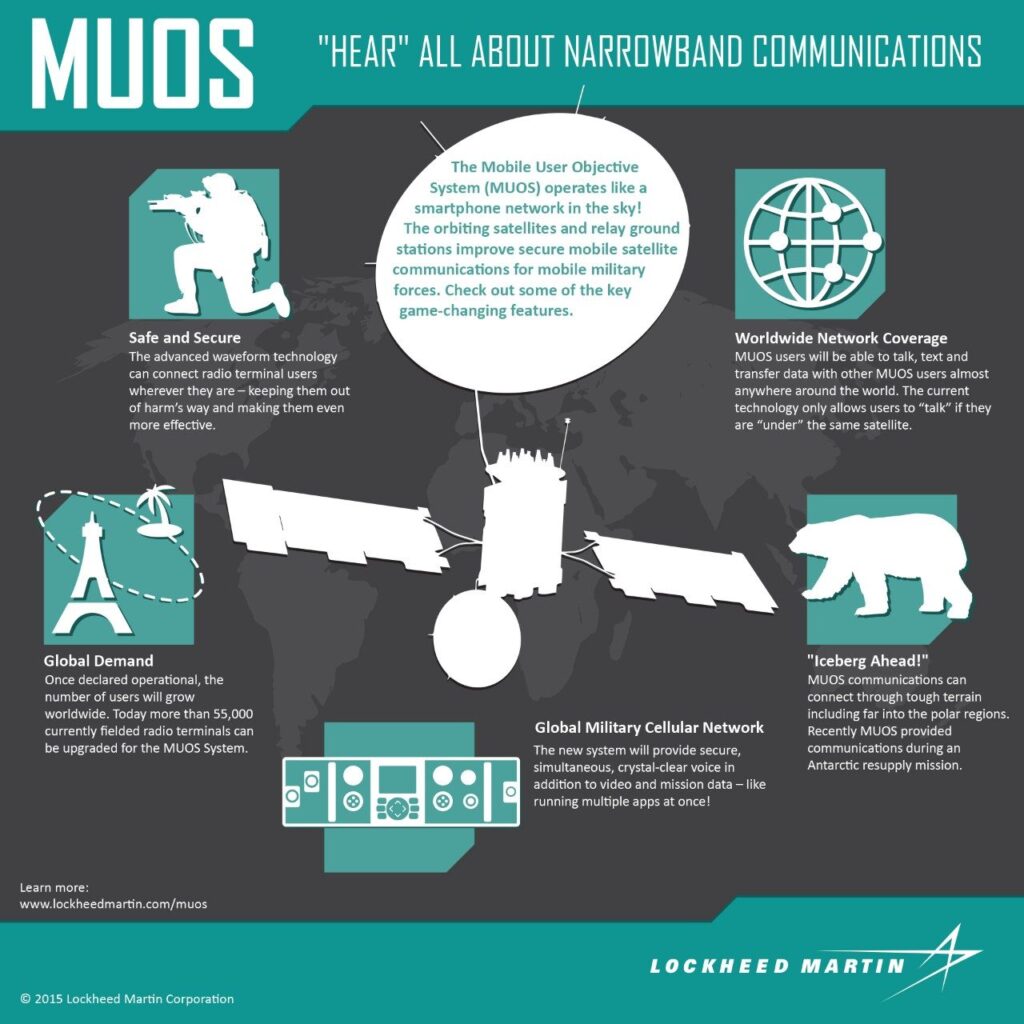
The costs and most recent proposed budgets of the communications programs still in development are highlighted below. *Are estimates limited to the current rapid development effort and not the total development cost.
| AEHF | $16.1 billion |
| EPS | $1.2 billion |
| EPS-R | $1.2 billion |
| ESS | $1.4 billion* |
| PTES | $.4 billion* |
| PTS | $1 billion* |
| WGS | $5 billion |

Missile Warning and Tracking
- Space-based Infrared System (SBIRS). Missile warning satellites that use infrared sensors to detect and track missile launches.
- Defense Support Program (DSP). Older missile warning satellites.
- Next-Generation OPIR. Satellites in development that will replace SBIRS.
- Future Operationally Resilient Ground Evolution (FORGE). Ground control system for the Next Gen OPIR satellites.
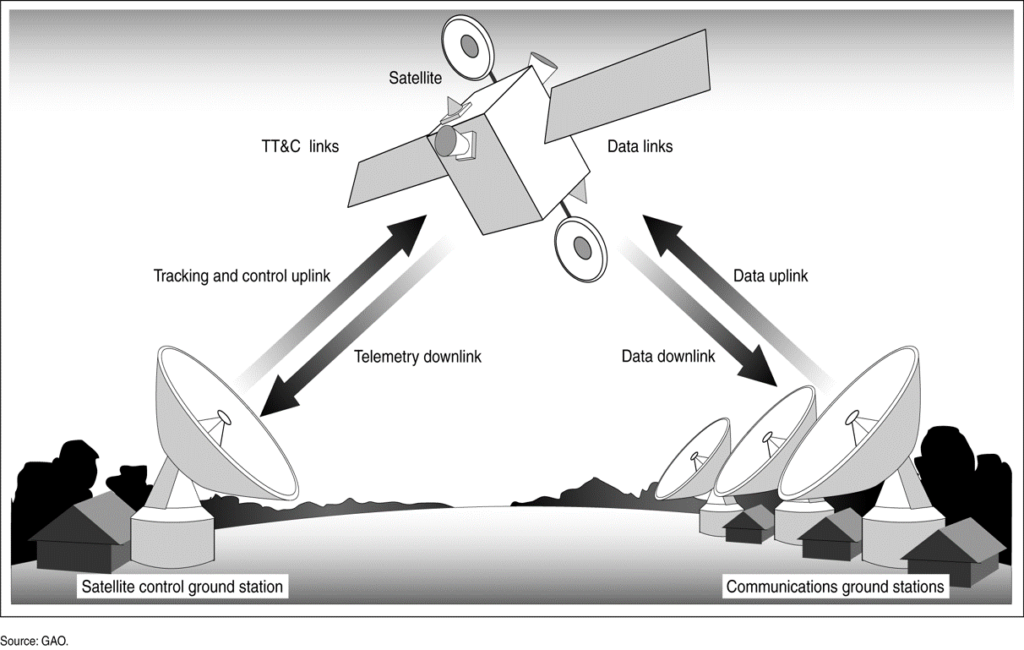
- Missile tracking satellites. The Missile Defense Agency, Space Force, and the Space Development Agency are collaborating to develop a collection of sensors and satellites for precise and continuous tracking of both hypersonic and ballistic missiles.
The costs and most recent proposed budgets of missile warning systems still in development are highlighted below. *Are estimates limited to the current rapid development effort and not the total development cost.
| SBIRS | $20.7 billion |
| FORGE | $3 billion* |
| NextGen OPIR Block 0 | $8.4 billion* |
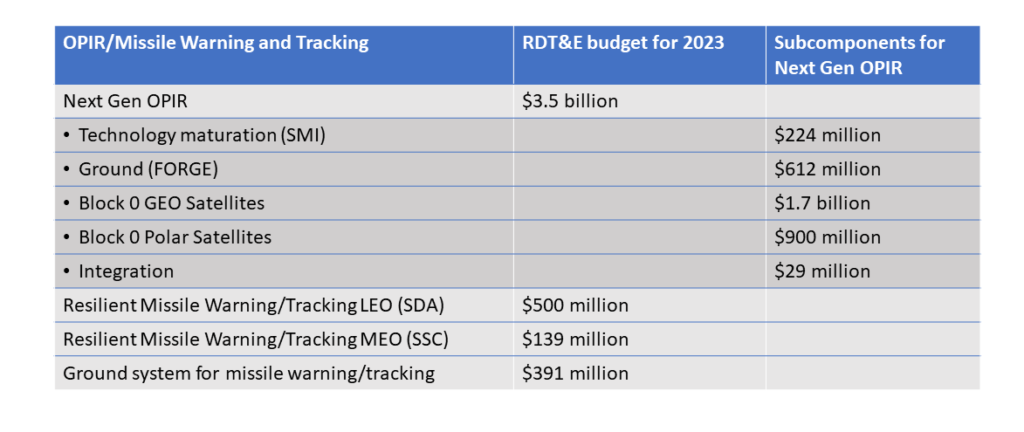
Positioning, Navigation, and Timing
- Global Positioning System (GPS) satellites. Satellites that provide positioning, navigation, and timing to military and civil users. The U.S. is committed to maintaining the availability of at least 24 operational GPS satellites, 95% of the time. To ensure this commitment, DOD has been flying 31 operational GPS satellites for well over a decade. The newest generation of GPS satellites are known as GPS III satellites. Five of 10 GPS III satellites have been launched. The next group of satellites will be the GPS IIIF, which are in development.
- Global Positioning System Next Generation Operational Control System (GPS OCX). Command and control system for GPS III satellites. Because this system was about 5 years behind schedule, DOD had to start two separate back-up efforts (known as Contingency Operations, or COps, and M-Code Early Use, or MCEU) to modify the current ground system to ensure continuity of GPS capabilities and to make anti-jamming capabilities available until OCX could be delivered. M-code is a stronger, encrypted, military-specific GPS signal designed to meet military positioning, navigation and timing needs.
- Military GPS user equipment. Modernized GPS receivers to be installed on planes, ships, ground systems, etc. The receivers will protect these systems from jamming.
Though developed and deployed by DOD, GPS has become an essential element of the global information infrastructure. Major telecommunications networks, banking systems, financial markets, and power grids depend heavily on GPS for precise time synchronization. Some wireless services cannot operate without it. Visit GPS.gov for tons of more information on the GPS satellites. This is a very informative website. GPS: The Global Positioning System
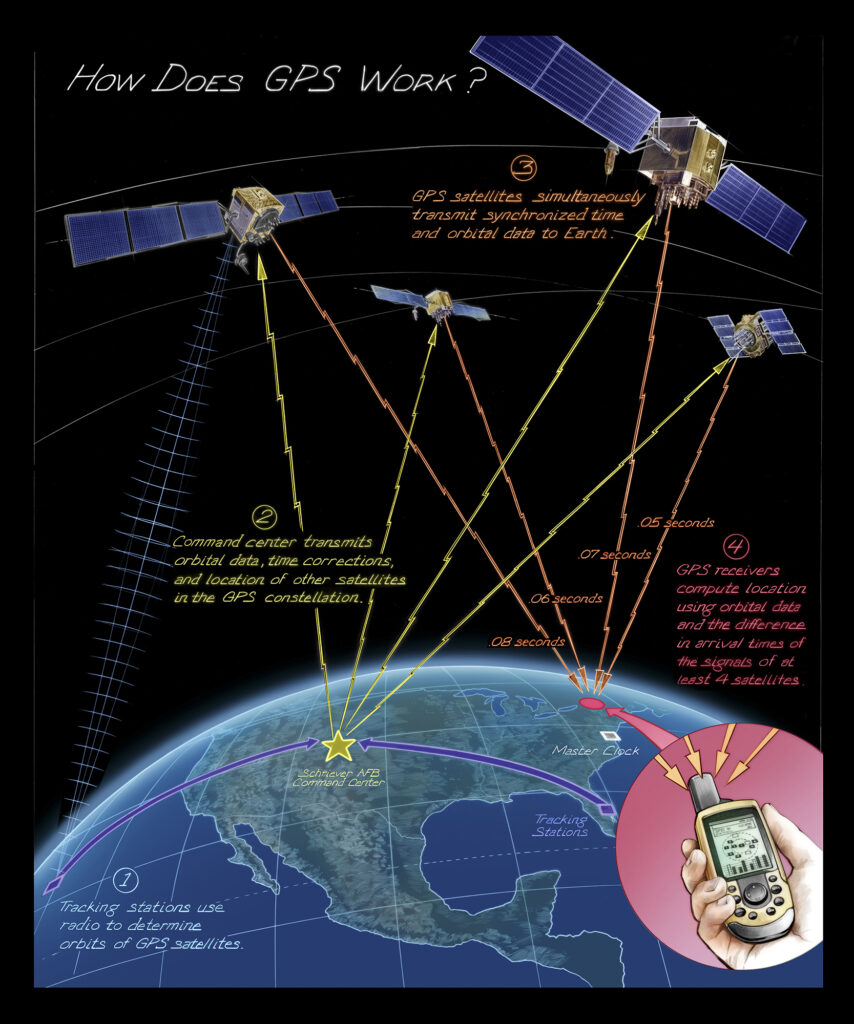
The costs and most recent proposed budgets for GPS systems still in development are highlighted below.
| GPS III satellites | $6 billion |
| GPS IIIF satellites | $9.7 billion |
| OCX | $6.7 billion |
| MGUE Increment 1 | $1.5 billion |

Weather, Environmental Monitoring
- Defense Meteorological Satellite Program (DMSP). Satellites that have been collecting weather data for U.S. military operations for more than 5 decades. Several attempts to start a program to replace DMSP were stopped or canceled, raising a risk of a gap in weather monitoring for DOD. But DOD is now developing two polar-orbiting satellites–known as Weather System Follow-on satellites-to address some of the capability. WSF is estimated to cost $1 billion. It is also using a Geostationary weather imaging satellite over the Indian Ocean, transferred to DOD from NOAA, and is working to develop additional imaging prototypes.
Surveilling and Protecting Space
Many programs related to space protection are classified but efforts in this area are ramping up in light of threats to government space assets.
- Space Fence. Space Fence is a ground-based S-band radar system that tracks satellites and space debris. It will expand the catalog of space debris tracked by the Space Command from about 20,000 objects to 200,000. Space Fence was declared operational in 2020. There are a variety of other ground and space-based systems that support the situational awareness mission including, the Space-Based Surveillance System Follow-on satellite, ground telescopes and ground radars.
- Space Command and Control (C2)–C2 program is not a satellite but a ground system designed to gather data from Space Fence and other sensors and transmit the data to a repository that can help enable commanders to make timely decisions, take action, and counter threats. A number of factors make this program particularly challenging given the number of organizations and assets involved, the complexity of the software being developed, the need to address new threats to space systems, and the need to make the C2 system cyber secure. Past programs designed to modernize the legacy system (SPADOC) that was fielded in 1979 were not successful. However, the Space Force has recently reported that it will be able to decommission SPADOC by the end of 2022. See recent reporting: US Space Force preparing to decommission legacy command and control system (defensenews.com).
Space Launch
- National Security Space Launch (NSSL). NSSL acquires launch services for DOD, national security and other government missions. Currently, NSSL procures launch services from United Launch Alliance (ULA) and Space X. ULA is transitioning from its Atlas V and Delta IV rockets to the Vulcan rocket. The Atlas V uses a Russian rocket engine. NSSL is estimated to cost $65 billion. That cost includes EELV.
- Evolved Expendable Launch Vehicle (EELV). Prior program for space lift.
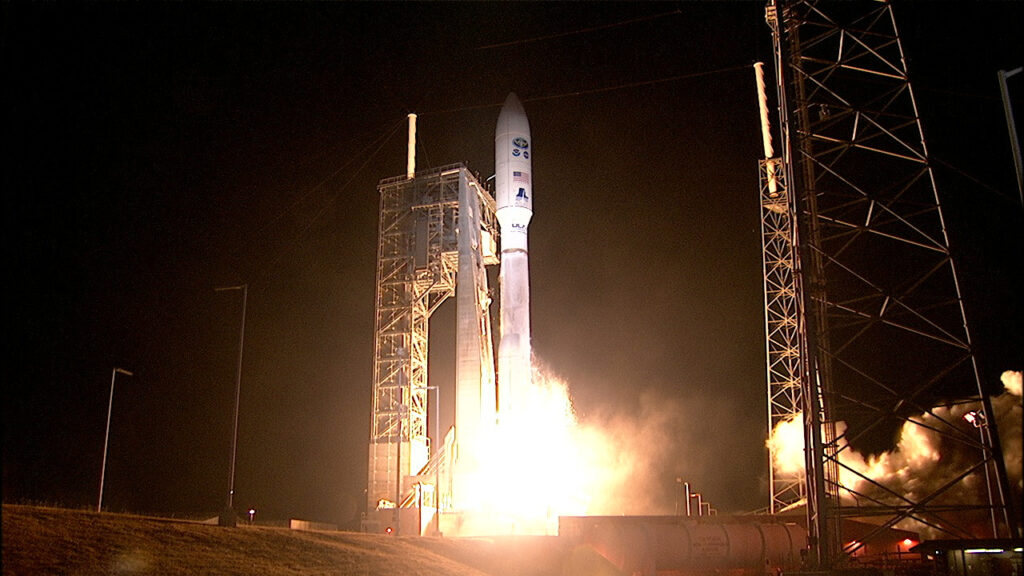
Proposed budgets for weather, space surveillance and launch are highlighted below.
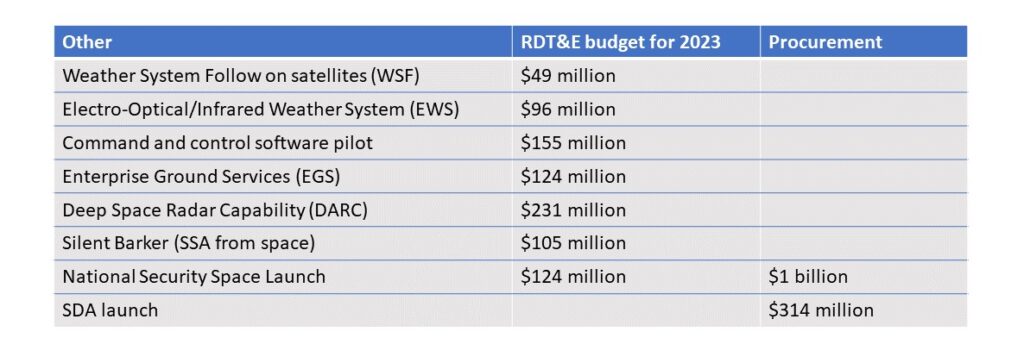
Additional sources of information on Defense space programs
- U.S. Government Accountability Office, Space Acquisitions: DOD Faces Challenges and Opportunities with Acquiring Space Systems in a Changing Environment | U.S. GAO
- GAO-21-222, Weapon Systems Annual Assessment: Updated Program Oversight Approach Needed
- Hypersonic Weapons Can’t Hide from New Eyes in Space – Scientific American
- GPS: The Global Positioning System




